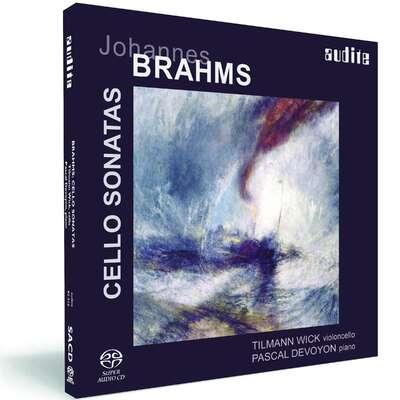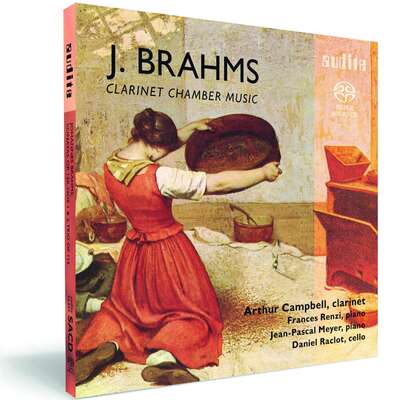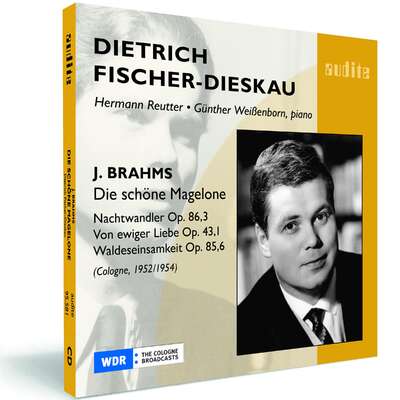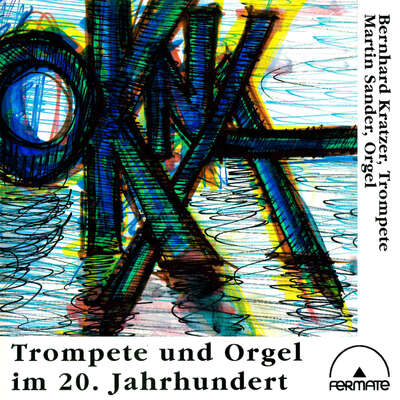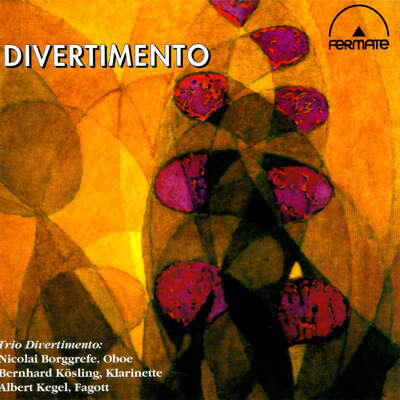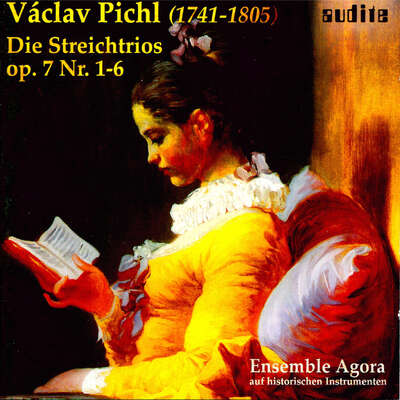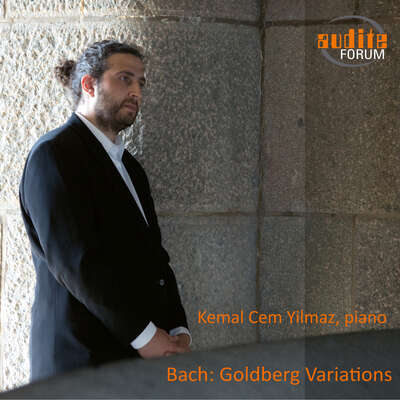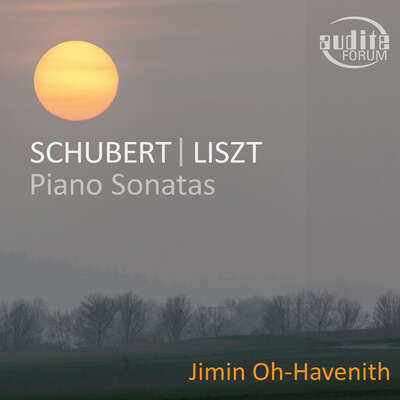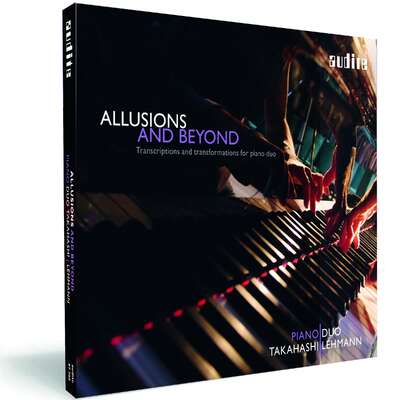
Brahms’s string quintets, masterworks of his late style, demand a precise and sensitive conjunction of contrasts: combining cheerfulness and melancholy, expansive ideas and compressed form, reminiscences of the past (including his own early works) and the desire to express a new and valid musical message – all this needs to be both perfectly balanced and clearly articulated. The Mandelring Quartet with Roland Glassl has pulled off such a “knowing” interpretation, masterfully balancing the works’ inner tensions.more
"Anders als in konkurrierenden Aufnahmen der Quintette bleiben hier die bisweilen orchestral anmutenden Klangballungen immer durchhörbar, wird das Stimmengeflecht zum Erlebnis. Das ist Kammermusik auf allerhöchstem Niveau." (hifi & records)
Details
| Johannes Brahms: Complete String Quintets | |
| article number: | 97.724 |
|---|---|
| EAN barcode: | 4022143977243 |
| price group: | BCA |
| release date: | 4. November 2016 |
| total time: | 54 min. |
Bonus Material
- digibooklet
- Concert review: Nordwest Zeitung_20190122
- Concert review: RBB Kulturradio_20170223
- Concert review: RBB Kulturradio_20170223
- Interview and concert review: Freunde der Villa Musica_20161016
- Concert review: Nordwest Zeitung_20170116
-
Interview: Concerti_20170123
"Blindly heard": Andreas Willwohl and Sebastian Schmidt from the Mandelring Quartet listen and comment on CDs by colleagues, without knowing who is playing
- Concert review: OVB online_20170127
- Concert review: Neues Deutschland_20161109
- Concert review: Wordpress.com_20161106
Informationen
Following on their successful release of Mendelssohn's complete string quartets, the Mandelring Quartet is now turning to Brahms in a recording of all the composer's string quintets and sextets. With its new roster (featuring Andreas Willwohl, viola), the ensemble joins with Roland Glassl, the quartet's long-time violist, in a recording of the two string quintets for audite.
Brahms's string quintets resemble self portraits. In them he presents, in concentrated form, the contrasts that characterize his musical thinking: drawing from musical history and his own creative output, he achieved a vision of something that is both new and eternally valid. He made use of the larger instrumentation to suggest expansiveness, at the same time casting the work in a terse and concise expressive form.
The musicians' rich and varied experience, gained from many concerts and recordings of repertoire ranging up to the present day, greatly enriches this production. Brahms's quintets, masterworks of his late style, demand a precise and sensitive approach to their conjunction of contrasts: combining cheerfulness and melancholy, expansive ideas and compressed form, reminiscences of the past (including his own early works) and the desire to express a new and valid musical message - all this needs to be both perfectly balanced and clearly articulated. The Mandelring Quartet with Roland Glassl has pulled off such a "knowing" interpretation, masterfully balancing the works' inner tensions.
A release of Johannes Brahms's two string sextets is planned for spring 2017.
Reviews
www.peterhagmann.com
| 11. Oktober 2017 | Peter Hagmann | October 11, 2017
Orchester in der Kammer
Das Mandelring-Quartett spielt Brahms
Die Aufnahmen zeugen von der einzigartigen Qualität des Quartetts und bestätigen seinen singulären Ruf.Mehr lesen
hifi & records | 3/2017 | Uwe Steiner | July 1, 2017
Anders als in konkurrierenden Aufnahmen der Quintette bleiben hier die bisweilen orchestral anmutenden Klangballungen immer durchhörbar, wird das Stimmengeflecht zum Erlebnis. Das ist Kammermusik auf allerhöchstem Niveau. Audites Tontechnik bildet zudem mehr Raum ab als sonst und wahrt den warmen Ton der Streicher.Mehr lesen
www.musicweb-international.com | Thursday March 30th | Michael Cookson | March 30, 2017 | source: http://www.music...
On Audite the Mandelring Quartett with violist Roland Glassl has recorded the Brahms String Quintets, works written when the composer was at the peakMehr lesen
Composed in 1882 the three movement String Quintet No. 1 in F major is sometimes referred to by the title ‘Spring’. Brahms was delighted with his efforts and described it to Clara Schumann as one of his finest works and to his publisher Simrock as a “beautiful work.” In the sunny and optimistic opening movement, the Mandelring underline a glorious song-like lyricism. Reflective yearning and cheerful optimism imbue the middle movement with its section of relative calm. A combination of fugue and sonata the vibrant final movement feels resolute and ardent, with playing that does not lack sensitivity. Always alert and perceptive the string playing throughout the contrasting moods of the score is commanding
Brahms projected his Quintet No. 2 in G major as his last chamber work although that proved not to be the case. It was composed in 1890, some eight years later than the F major Quintet, when Brahms was fifty-seven. One contemporary of Brahms even heard in the music “the cheerful, relaxed atmosphere of the Vienna Prater” and the composer corroborated this impression with the reply “Isn't it so! And the many pretty girls in it!” Consequently the four movement score is occasionally known as the ‘Prater’. Feeling upbeat and resolute, the opening movement retains an inspiring dignity. In the contrasting Adagio, the intense disposition of this deeply sorrowful music is compellingly displayed. Marked Un poco Allegretto the third movement, even with its ravishing dance rhythms contains a slight impression of restraint. A spring-like feel pervades the buoyant Final movement, conveying a fulsome sense of freedom and renewal.
These are profoundly satisfying performances of both works from the Mandelring and Roland Glassl. Refinement and intense concentration are the watchwords, together with the impeccable unity one has come to expect from these players. Agreeably, if fairly closely, recorded at Konzertsaal, Abtei Marienmünster there is a warm edge to the string sound. There is an excellent booklet essay too, written by Habakuk Traber, that has been translated into English.
There are several alternative accounts of these String Quintets in the catalogue worthy of attention. Intensely rewarding is the admirable performance by the Leipziger Streichquartett with violist Hartmut Rohde recorded in 2003 at Lindensaal Markkleeberg on MDG. The Raphael Ensemble, recorded in 1995 at St. Georges, Bristol, on Hyperion and the Hagen Quartet with Gérard Caussé, recorded in 1998 at the Mozarteum, Salzburg on Deutsche Grammophon are worthy accounts providing considerable satisfaction. Nevertheless these are masterclass performances from Mandelring and Roland Glassl standing comparison with the finest recordings.
A note in the booklet explains that Mandelring Quartett also plan to record the Brahms Sextets – a project I keenly anticipate.
Stereo | 3/2017 März | Marcus Stäbler | March 1, 2017 AUDIOPHILES HIGHLIGHT
Die rasche Lesart des Allegro con brio im Kopfsatz des G-Dur-Quintetts vonMehr lesen
Fanfare | March 2017 | Jerry Dubins | March 1, 2017 | source: http://www.fanfa...
Since its founding in 1997, Germany’s Mandelring Quartet has built a commendable discography mainly around the mainstream German Romantic stringMehr lesen
Considering the composer we’re dealing with here, Brahms’s two string quintets are warm, genial, affable works, relatively free from the feelings of melancholy, loneliness, loss, and lashing out that characterize so much of his music. The scores are not free, however, from the contrapuntal, harmonic, and especially the rhythmic complexities that seem to have been hardwired into Brahms’s brain. Brahms was still a relatively young 49 when he composed the F-Major First Quintet in 1882 during a stay at one of his favorite vacationing spots, the spa town of Bad Ischl in upper Austria. The work opens with an expansive, relaxed theme that reflects the stress-free spring atmosphere of fresh air, sparkling water, and sunny skies that surrounded Brahms as he put pen to paper. He even wrote to his publisher, Simrock, “You have never before had such a beautiful work from me.” The Mandelring Quartet, joined by violist Roland Glassl, strikes just the right balance between the score’s seemingly uninhibited friendliness—almost as if Brahms has imbibed a bit too much and has become overly familiar with strangers in the pub—and its moments of contented repose. The players make the music glow, as it should.
When Brahms set to work on his G-Major Quintet eight years later in 1890, he intended it to be his valediction. At 57, he was financially secure, a world-famous composer, and a beloved friend and mentor to many. He was ready to retire and rest on his laurels. It wouldn’t have been a bad note to go out on, for the music is stunningly beautiful, but Fate had other plans for the composer and, fortuitously, for us. Brahms’s hope for a peaceful retirement was just that, a pipedream. Inspired by the playing of clarinetist Richard Mühlfeld, Brahms was soon back at his desk, composing his four clarinet masterpieces—the Clarinet Trio and Quintet, opp. 114 and 115, and the two Clarinet Sonatas, op. 120. But even those works weren’t his last words. His final musical utterances were the Four Serious Songs, op. 121, and the 11 Chorale Preludes for Organ, op. 122, both composed in 1896 in the year before his death.
Where the earlier string quintet projects feelings of well-being, good cheer, and general contentment, the later G-Major Quintet seems to take wing on soaring updrafts of rapture. From the very opening halo effect, produced by the two violas mirroring the two violins interlocked in a contrary motion, measured tremolo, we’re transported to a place of radiant light and otherworldly exultation. The feeling of elation and ecstasy, which seems barely containable and likely at any moment to escape the constraints of the printed page, is made viscerally manifest by the Mandelring’s players and Glassl. This may truly be the most transporting performance of Brahms’s G-Major Quintet I’ve ever heard.
Previous favorites in the two quintets, as coupled here, have been those by the Takács Quartet with Lawrence Power, the Alexander Quartet with Toby Appel, and the Nash Ensemble with Philip Dukes, this new version by the Mandelring and Glassl now supersedes all of them. This is not just fantastic playing, it’s revelatory music-making on the highest level.
Bayern 4 Klassik - CD-Tipp | 07.02.2017 | Michael Schmidt | February 7, 2017 | source: https://www.br-k...
BROADCAST CD-Tipp
Streichquintette
Zu den zahlreichen Wettbewerben, die das Mandelring Quartett gewann, zählt auch der renommierte ARD-Musikwettbewerb. Preisgekrönt wurden zudemMehr lesen
Es wäre ein melancholisch-heiterer Abschied gewesen, wenn Johannes Brahms einer eigenen Äußerung folgend mit dem Streichquintett in G-Dur op. 111 seine kompositorische Tätigkeit beendet hätte. Glücklicherweise vereitelte sein anhaltender Reichtum an Ideen für neue Werke diesen Vorsatz. Atmosphäre und Bauweise dieses Quintetts erinnern an den Typus der Serenade, mit der Brahms die Reihe seiner Werke für Orchester eröffnet hatte. In eher gedämpftes Licht mit wehmütigen Zwischentönen und klanglicher Akzentuierung der mittleren Stimmen ist der langsame Satz getaucht.
Vorausblickende Kühnheit in der Konstruktion
Beide Streichquintette von Johannes Brahms haben etwas reflektiert zurück Blickendes und sind späte Meisterwerke, die eine Summe der eigenen schöpferischen Leistung ziehen. In konzentrierter Form verbinden sie scheinbar Gegensätzliches wie musikgeschichtliche Reminiszenzen und vorausblickende Kühnheit in der Konstruktion oder apollinische Heiterkeit und spätromantische Melancholie im Ausdruck. Das Bestreben aus vermeintlich Widersprüchlichem höhere Einheiten zu bilden, zeigt sich auch in seinem Streichquintett in F-Dur op. 88, dessen abschließendes Finale Formelemente der Fugen Johann Sebastian Bachs und der Sonaten Ludwig van Beethovens subtil miteinander verblendet.
Einfühlsam ausbalancierte Interpretation
Die hohe strukturelle und emotionale Komplexität der Streichquintett-Kunst von Brahms wird in der so präzise wie einfühlsam ausbalancierten Interpretation des Mandelring Quartetts und Roland Glassls zum veritablen Hörvergnügen. Den fünf Musikern gelingt ein wunderbar stimmiges Klangbild im Zusammenspiel, das sich nicht zuletzt ihrer reichen Erfahrung mit einem breiten, bis in die zeitgenössische Musik reichenden Repertoire verdankt. Eine Brahms-Interpretation vom Feinsten – unbedingt hörenswert!
Diapason | 01.02.2017 | Jean-Michel Molkhou | February 1, 2017
On connaît mal, trop mal, en France le Quatuor Mandelring, pourtant en activité depuis plus de trente ans. De son opulente discographie (dont desMehr lesen
On réalise dès les premières mesures de l’Opus 881a droiture et l’intégrité du jeu. Cette remarquable formation impressionne autant par la densité des timbres et par la façon de « calibrer » les élans: on y reconnaît l’héritage d’une culture et d’un style. Autorité et puissance habitent un discours rigoureusement organisé dans les trois mouvements du Quintette n° 1 ; les artistes trouvent un juste davanéquilibre des voix comme des nuances. La séduction n’est pas la priorité d’une vision plus forte et intense que véritablement printanière.
Le lyrisme plus généreux du Quintette n° 2 s’épanouit mieux dans leur palette expressive. La vigueu r, l’assurance dominent un propos d’une solidité à toute épreuve, ponctué d’envolées héroïques. Pourtant dans le sublime Adagio, ce n’est pas le rêve qu’ils dessinent mais toujours la réalité. Un brin d’abandon aurait allégé le ton, un peu trop musclé. La couleur slave des deux derniers mouvements est clairement soulignée—encore plus nettement que dans la gravure historique des Budapest. Si, comme nous, vous aimez par-dessus tout le charme plus viennois et surtout la touche de tendresse des Amadeus (avec Cecil Aronowitz en 1967, DG), vous risquez de rester au bord du chemin nettement tracé et balisé par les nouveaux venus, avec métier et conviction.
Fono Forum | Februar 2017 | Marcus Stäbler | February 1, 2017
Die rasche Lesart des Allegro con brio im Kopfsatz des G-Dur-Quintetts von Brahms nimmt dem weit ausgreifenden Cellothema seine orchestrale Schwere.Mehr lesen
Auch in den Folgesätzen lässt sich das Ensemble nie von der romantischen Stimmung verführen, wegtragen oder aufhalten, sondern wahrt seine flüssigen Tempi und eine analytische Klarheit, mit der es die komplexen Strukturen der Musik durchleuchtet – etwa im Allegretto, in dem die Interpreten einen Blick auf den doppelten Boden des vermeintlich volkstümlichen Tons gewähren: Dort irritiert Brahms den tänzerischen Schwung durch kunstvoll verzahnte Gegenrhythmen. Durchs Finale fegt das erweiterte Mandelring Quartett dann mit einem jugendlichen Feuer, als hätte Brahms das Quintett nicht gegen Ende, sondern zu Beginn seiner Komponistenkarriere geschrieben.
Trotz einer auf fünf Stimmen angedickten Klangfülle verliert das Ensemble nie seinen originär kammermusikalischen Zugriff. Auch im F-Dur-Quintett, mit dem die CD beginnt, sind die vielen dynamischen Feinheiten, motivischen Verästelungen und die rhythmischen Konflikte der Musik transparent abgebildet. Insgesamt wirken die beiden Quintette hier etwas "klassischer" und weniger opulent als in anderen Aufnahmen, aber nicht minder mitreißend.
American Record Guide | February 2017 | Paul L Althouse | February 1, 2017 | source: http://www.ameri...
I have encountered the Mandelring Quartet in their earlier recordings of Schubert and Mendelssohn, where I found their playing wonderfully alert andMehr lesen
The Brahms quintets are late works, but with the Mandelring they do not sound at all autumnal. I’ve sometimes complained when groups take the opening of the F major quickly—I’ve preferred the warmer approach of the Raphael Ensemble—but here, at a pretty good pace, it sounds quite right (and isn’t the opening theme one of Brahms’s nicest melodies?). Fast passagework, as in the last two movements of the F major, is very crisp and beautifully controlled. Through all of this, the emotional side of Brahms is well served. This is modern Brahms, polished and crisp, never sentimental or stodgy. Unless you’re wedded to old-world Brahms, you’ll love this!
Record Geijutsu | 2017.1 | January 1, 2017
Japanische Rezension siehe PDF!Mehr lesen
www.musicweb-international.com | January 2017 | Stephen Greenbank | January 1, 2017 | source: http://www.music...
Last year I reviewed the Mandelring Quartett's 4-CD traversal through Mendelssohn’s complete chamber music for strings. It was my first encounterMehr lesen
The Quintets are richly scored and rank amongst the composer's finest chamber works. In both, Brahms chose to double the viola, following Mozart’s example, rather than adopting the Schubertian model of two cellos. I’ve never understood why the Op. 88 is one of his least popular chamber works. The composer, himself, thought very highly of it, describing it to Clara Schumann as ‘one of my finest works’, and to his publisher Simrock, ‘You have never before had such a beautiful work from me.’ The Mandelrings convey the affable pastoral character of the opening movement to perfection, without losing sight of its more wistful moments. There’s tremendous warmth and commitment in their playing, and this is captured by the first class recording quality. The second movement is unusual in that Brahms combines a slow movement with a scherzo. I love the way the players make the contrast between the heavier, solemn, slow section and the more light-hearted episode, which is kept nimble and light on its feet. The fugal passages in the finale are the composer’s nod to the Baroque. There’s plenty of cumulative energy in the performance, with an underlying restless feel. All the contrapuntal strands are neatly articulated and clearly projected.
Brahms intended his Second String Quintet to be his final composition. Fortunately this was not to be and, over the next seven years before his death in 1897, he went on to compose the Clarinet Trio and Quintet, the two Clarinet sonatas and the Opp. 116-119 piano pieces. Cast on a larger scale than its predecessor, the work displays virtuosic string writing, outshining any of his other chamber works. Perhaps his confidence was buoyed up by the successful instrumental writing of the Double Concerto, written three years earlier. Although low in spirit, fearing his creative powers were ebbing, the overall mood of the work doesn’t reflect this. The first movement opens exuberantly, and the Mandelring’s invigorating account and sense of abandon is compelling. Bernhard Schmidt’s surging cello figures at the beginning are confident and assured and add to the dramatic impact. There’s a subdued, introspective quality in the two inner movements, the Adagio especially is expressively contoured. The high energy returns in the finale, delivered with infectious vivacity and enthusiasm.
These performances benefit from clear, rich sounding sonics. For those seeking a recording of the two Quintets played with conviction and authority, this release from Audite neatly fits the bill. I look forward eagerly to their recording of the two Sextets, which I gather is in the pipeline.
concerti - Das Konzert- und Opernmagazin | Jaunuar 2017 | Julia Hellmig | January 1, 2017 | source: https://www.conc... Quartett mit Verstärkung
Zusammen mit ihrem ehemaligen Bratschisten Roland Glassl schöpfen sie ihre Möglichkeiten voll aus, so als hätten sie sich eigens für dieses Vorhaben gefunden. Eine solche Einheit ist Balsam für die Klangqualität: Jede Stimme tritt zur rechten Zeit ins Rampenlicht, ohne die anderen in Frage zu stellen. Mehr lesen
Die Rheinpfalz | 14.12.2016 | Markus Pacher | December 14, 2016
Der Rauschebart hätte sich gefreut
CD regional: Brahms-Quintette, gespielt vom Mandelring Quartett und Roland Glassl
NEUSTADT. Mit den Gesamteinspielungen der Streichquartette vonMehr lesen
Der neue Merker | 13. Dezember 2016 | Dr. Ingobert Waltenberger | December 13, 2016 | source: http://der-neue-...
Das Mandelring Quartett ist der bestmögliche Anwalt dieser Musik. Das Chiaroscuro der Stimmungen, Licht und Schatten vermögen die Musiker in einen unendlichen Fluss der sich entwickelnden Motive, in ein changierendes Wunder an Farben tauchen. Großartig!Mehr lesen
www.myclassicalnotes.com | December 11, 2016 | December 11, 2016 | source: http://www.mycla...
Brahms’ quintets [...] demand a precise and sensitive approach to their Performances, combining cheerfulness and melancholy, expansive ideas and compressed form, reminiscences of the past (including his own early works) and the desire to express a new and valid musical message – all this needs to be both perfectly balanced and clearly articulated. The Mandelring Quartet with Roland Glassl has pulled off such an interpretation, masterfully balancing the works’ inner tensions.Mehr lesen
Rondo | 03.12.2016 | Michael Wersin | December 3, 2016 | source: http://www.rondo...
Die Mandelring-Musiker lassen uns Brahms in der ganzen manchmal verwirrenden Breite seines Ausdrucksspektrums und ästhetischen Gehalts erleben – und das ist sehr gut so!Mehr lesen
www.pizzicato.lu | 02/12/2016 | Remy Franck | December 2, 2016 | source: http://www.pizzi... Viel Wärme für Brahms
Nachdem sie sich vor Jahren den Streichquartetten von Brahms gewidmet haben, wenden sich die Musiker des Mandelring Quartetts nun der EinspielungMehr lesen
Das Erste Streichquintett op. 88 erklingt in einer ebenso geist- wie schwungvollen Interpretation. Die vier Musiker haben sich den Finaldrang der Kompositionen zu eigen gemacht, der sie zu grandiosen Steigerungen führt, die sie mit üppigem, vor allem aber auch auffallend warmem Klang realisieren. Aber auch feines Nuancieren sowie ein untrüglicher Sinn für Farben bringen Mehrwert in diese Interpretation von schönster Klangkultur.
Ganz anders steht es um das G-Dur-Quintett von Johannes Brahms. Der 57-jährige sah damit nämlich sein kompositorisches Schaffen für abgeschlossen an. Seinem Verleger Simrock schrieb er: « Mit diesem Brief können Sie sich von meiner Musik verabschieden, denn es ist sicherlich Zeit zu gehen.“ Das stimmte letztlich nicht, und es sollten nach dem Opus 111 noch 11 weitere Werke folgen, u.a. die Stücke, die er für den Klarinettisten Richard Mühlfeld schrieb.
Nun ist das Quintett op. 111 zwar von Todesgedanken durchzogen, im Grunde aber keine traurige Musik. Die Mandelrings und Glassl betonen zwar Momente von Resignation und bringen im zweiten Satz auch die Musik fast zum Stehen, aber letztlich zieht das Quintett seine expressive Kraft aus wirkungsvollen Kontrasten zwischen wohlig heiteren Passagen und ernsteren Gedanken. Mehr als einmal sieht man Brahms zufrieden schmunzeln.
Das alles bringen die Musiker in einen zusammenhängenden Kontext, so dass sich das Quintett wirklich als geschlossenes Ganzes präsentiert. Auch in dieser Interpretation gefällt der überaus warme Ton der Streichinstrumente sowie die perfekte Balance in einer sehr natürlich wirkenden Aufnahme.
Particularly warm and finely nuanced, continuously rhetoric performances of both Quintets by Johannes Brahms. The recorded sound is extremely clear and well balanced.
BBC Music Magazine | Christmas 2016 | EC | December 1, 2016
The Mandelring Quartet, with viola player Roland Glassl, is a true team of equals. Its luscious, even sound is perfect for Brahms's rich quintets andMehr lesen
Audio | 12/2016 | Andreas Fritz | December 1, 2016
"Leider nicht von Johannes Brahms", notierte dieser unter den Anfang des Walzers "An der schönen blauen Donau". "Gott sei Dank von Johannes Brahms",Mehr lesen
Audio | 12/2016 | Andreas Fritz | December 1, 2016 Neu und gut
[…] Dass der junge Brahms den Lebensunterhalt der Familie mit Tanzmusik verdiente, scheint in seinen Werken immer wieder auf – auch im drittenMehr lesen
BBC Radio 3 | Saturday 26th November 2016, 10.25 am | Stephen Johnson | November 26, 2016
BROADCAST
Stephen Johnson reviews romantic chamber music
Sendebeleg siehe PDF!Mehr lesen
www.concerti.de
| 24. November 2016 | Julia Hellmig | November 24, 2016 | source: http://www.conce...
Aus fünf wird eins
Das Mandelring Quartett glänzt in neuer Besetzung und um einen Ehemaligen ergänzt mit den Streichquintetten von Brahms
Brahms kompositorische Gegensätze werden hier zum Gesamtkunstwerk, das man sich am liebsten immer wieder anhören möchte.Mehr lesen
Hessischer Rundfunk | hr2-kultur, Freitag, 18. November 2016 | November 18, 2016 | source: http://www.hr-on...
BROADCAST
Die CD-Tipps 14. - 20. November
Sendebeleg siehe PDF!Mehr lesen
RBB Kulturradio | Freitag, 18. November 2016, 13.10 Uhr | Hans Ackermann | November 18, 2016 | source: http://www.kultu... BROADCAST
Sendebeleg siehe PDF!Mehr lesen
RBB Kulturradio | 18.11.2016 | Hans Ackermann | November 18, 2016 | source: http://www.kultu... Fünf Freunde – Das Mandelring Quartett und der Bratscher Roland Glassl spielen die Streichquintette op. 88 und op. 111 von Johannes Brahms
In den Streichquintetten von Johannes Brahms ist – wie bei Mozart, aber anders als bei Schubert – die Bratsche verdoppelt. Die mittlere StimmlageMehr lesen
Zufriedener Rückblick
In den ersten Sätzen beider Quintette dominieren jeweils die Geigen, aber die Mittelsätze gehören den Bratschen und dem Cello. Wunderbar, wie das Mandelring-Ensemble hier den Klang zur erhabenen Melancholie hin abdunkelt. Insgesamt ist die Stimmung dieser Spätwerke von guter Laune geprägt, nur ist der Himmel eben schon ein wenig bedeckt. Brahms war im November 1890, als das Quintett op. 111 uraufgeführt wurde, im Herbst seines Lebens angekommen. Zeit für einen zufriedenen Rückblick auf Leben und Werk.
Gelungene Synthese
Brahms besinnt sich in seinen Quintetten äußerst gekonnt auf die Vergangenheit, blickt gleichzeitig aber auch nach vorn. Er lässt barocke Tänze und kontrapunktische Stimmen wieder auferstehen, allerdings formal verwandelt und in moderner harmonischer Gestalt. Das Mandelring Quartett lässt diese eindrucksvolle Synthese aus Barock und Hochromantik in allen Nuancen hörbar werden: eine Sarabande, die zum Adagio wird, eine Gavotte, die sich in ein romantisches Scherzo verwandelt, eine Fuge, die ein dramatisches Finale einleitet. Brahms zeigt sich als Altmeister, der mit alten Meistern umzugehen weiß.
Erweiterte Familie
Im Mandelring Quartett spielen die drei Geschwister Sebastian, Nanette und Bernhard Schmidt zusammen mit dem Bratscher Andreas Willwohl. Der frühere Solobratscher des Rundfunk Sinfonieorchesters Berlin ersetzt seit 2015 Roland Glassl, der dem Ensemble zuvor mehr als 15 Jahre angehört hat und für diese höchst gelungene Aufnahme zu fünft noch einmal mit von der Partie ist. In dieser speziellen Konstellation aus Familienmitgliedern und Freunden verwirklicht sich erneut ein über mehr als drei Jahrzehnte entwickeltes Klangideal, das seinesgleichen sucht.
Davon konnte man sich in den letzten Jahren auch immer wieder in der Berliner Philharmonie oder im Radialsystem überzeugen. Regelmäßig tritt das Ensemble dort mit intelligenter Schwerpunktsetzung auf. Am 1. Mai 2017 dann auch mit diesen beiden formvollendeten Streichquintetten von Johannes Brahms.
Rhein-Main Magazin | 11/16 | Sebastian Laux | November 1, 2016
Nach der erfolgreichen Veröffentlichung aller Streichquartette von Mendelssohn wendet sich das Mandelring Quartett nun allen Streichquintetten undMehr lesen
Classical CD Choice | December 1, 2016 | Barry Forshaw | source: http://www.cdcho... Shostakovich and Co. from Challenge, BIS, Chandos
[...] this is a particularly impressive set, finding all the panoply of feeling and mood within both works.Mehr lesen










































